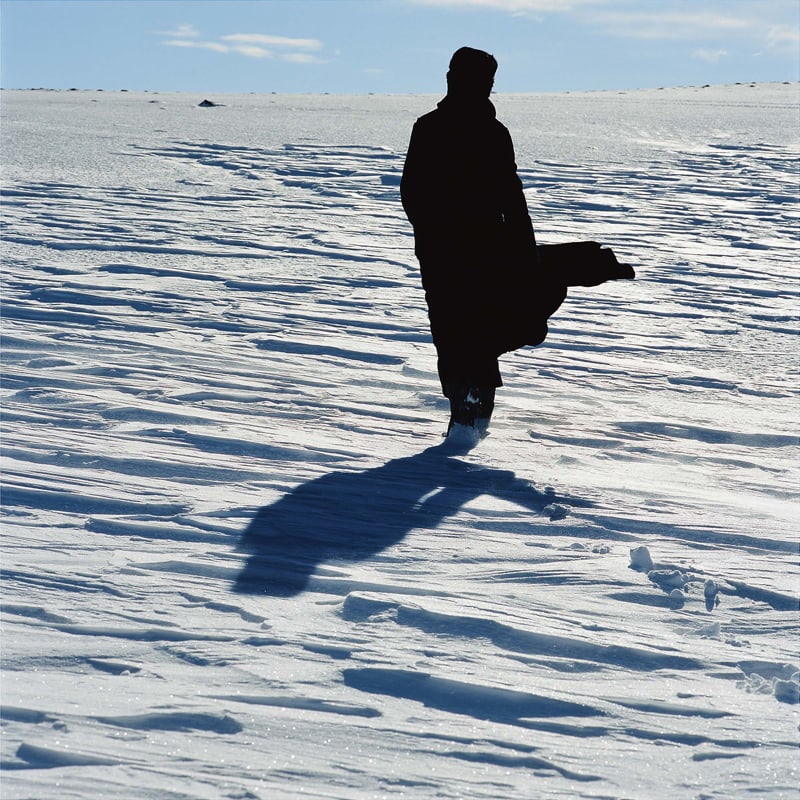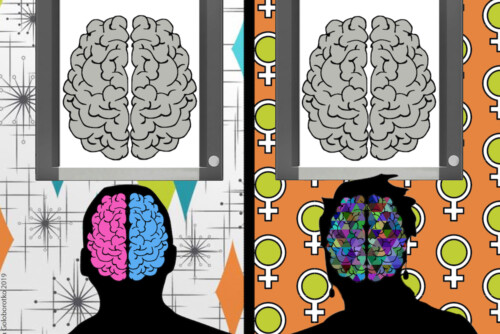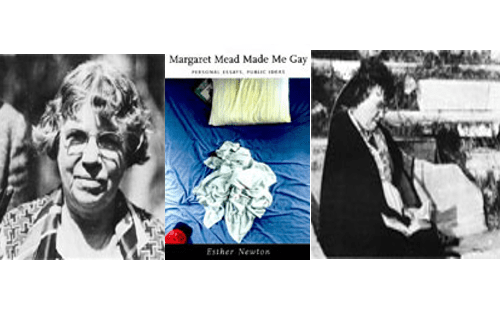Art (Click images below to enlarge)








Interview with the Artist
This interview is reprinted with permission. Source: Lara Taubman, Spot, “True North: Interview with Isaac Julien”, (Houston Center for Photography), Spring 2006, pp 4-7, cover.
True North: Interview with Isaac Julien
by Lara Taubman
MAK Center For Art And Architecture (Schindler House) Los Angeles, California July 15, 2005
Author’s Note: In July 2005, the exhibit True North opened at the MAK Center for Art and Architecture in Los Angeles, California in collaboration with the event Outfest: The 23rd Gay and Lesbian Film Festival. Curated by Lauri Firstenberg, photographs from the film True North starkly, but elegantly, contrast the 1920s modernist architecture of R.M. Schindler in this exhibition space hidden away in a niche of West Hollywood. I was able to interview Julien on the day of his opening in the MAK Center’s garden about the exhibit, the film, and how it relates to larger cultural issues.
Lara Taubman: Can you tell me why you entitled the piece True North?
Isaac Julien: Well, the title, True North, oddly enough, came from discussions with a production company I worked with when I shot this piece in Iceland which was called True North. I think it’s very much a pun on the idea of true north and magnetic north. When you get to the North Pole, true north, in a way, disappears and you have magnetic north and it changes actually.
True north has a relevance to a mythical dimension. In a Canadian northern American sense, true north is kind of a nationalistic, mythological, nation-building story of true north as representational of something authentic around Canadian-ness, a typical national story building around conquest, etc, etc.
For me, True North is an ironic title that is situated as the story around Matthew Henson perhaps being one of the first people to reach the North Pole. Everybody knows that Robert E. Peary was anointed with that accomplishment. So, in a way, there is, if you like, an ironic repositioning of Matthew Henson, who was his accomplice and companion who worked with him side by side for the achievement Peary has been known for that was, nonetheless, never recognized. This project is a meditation, a re-tracing of Henson’s footsteps. And in the narration, there’s a point to a moment historically that’s a rupture in the grand narrative of the polar expeditions and that interruption is precisely in the figure of my protagonist, Vanessa Myrie, who is re-tracing his footsteps.
So you have this absence/presence kind of thing: that which is what is absent from history and that which is present and is implied in the whiteness of the ice or the blue hues of it. Figuring this kind of protagonist in the piece is an enigma that is speaking through the voice of Henson. The narration comes from a text which is excerpted from an interview with Henson that was in a geographical, historical magazine thirty years after Peary’s death. Henson, in an interview, declares the very troubling, ambivalent response that Peary had to Henson once he let Peary know that perhaps he had gotten to the North Pole before him. I usurped and poetically re-structured the narration and the voiceover for the piece.
I was so struck in the photographs and the film by this black woman who is an explorer or nomad who is in a sheer dress, making her look as if she is on a beach in the West Indies or Africa even though she is on a beach with ice chunks on it. Clearly, it’s a freezing environment and the implied contrast is so shocking. I am interested in this woman who is in a place where you would not expect to see a black woman or a female explorer, for that matter. You set up some glaring ironies there that are interesting.
It probably begins by making a piece of work about ice and snow. I am very interested in debates that took place about a decade ago about representations of whiteness. I always thought that I couldn’t just make a piece that would be about those questions in a film because it wouldn’t really substantiate what I saw as the theoretical interests in these debates that had been taking place in various domains of humanities. So, I guess I have always been interested in translating some of these ideas into the realm of the thematic or the realm of visual arts.
When I came across Matthew Henson’s story I found the perfect vehicle. I could declare some expediency here in enjoying the idea of trying to re-frame the black protagonist in this setting because, for me, Matthew Henson’s journey to the North Pole creates this co- or inter-dependence. I think it’s really interesting that you have an African-American who is forging this journey into the sublime, into blankness, into whiteness, and almost into a certain disappearing-ness because Henson disappears from history. That’s one of the reasons. The second reason is the incongruousness that one may associate with this particular ecological landscape and the way that this subject is, of course, a subject that wouldn’t be considered an authentic part of that landscape. In a way, it is about trying to re-position grand narratives to obfuscate or obscure those histories that have taken place. And, of course, the reason that people want to go to these far away spaces and conditions has a certain colonial aspect to it.
It is interesting to think about Peary’s journey into this landscape that we associate with heroic white masculinity, and it is interesting to think about the way people tackle this subject. I came across a book through my research by Lisa Bloom, which is called Gender on Ice. This book was really fascinating because it spoke of women explorers going on polar expeditions. It spoke about how there had been a mythical construction around Peary and indeed, his dependency on the knowledge of the native Inuit. Matthew Henson obviously calls into question this idea of a certain white supremacist, masculinist quest and so there are all of those things which one wants to regenerate in some way, but not in a preachy, didactic sense. It is meant instead to hint at the third reason for her assemblage in the scene where she is wearing this diaphanous material. In a way, she has translated her gear into a mourning that is taking place.
In my research for this interview, I had to return to Paul Gilroy’s Black Atlantic. [Gilroy introduced this term with his publication Black Atlantic: Modernity and Double Consciousness, 1992, a book that shows the complex inter-connection between Modernity and the Black Diaspora.] Do you agree with Gilroy’s ideas that the Black Diaspora begins with his notion of the “Black Atlantic?”
Gilroy’s idea of the “Black Atlantic” certainly informs the piece. I’d like to think about this piece of work in dialogue with that, but not as illustrating those arguments. True North took its premiere in Germany in an exhibition called Black Atlantic. In a way, it is to second-guess notions of what that relationship would be, but it is a metaphor for the black subject of what would be perceived as “Arctic” or “Europeanized” and, in a way, making history or becoming one with that space.
Another way that I am very interested in the “Black Atlantic” is the way in which Paul develops the idea of the displaced sublime. I see that as an idea where he talks about music and spirituals and this music that was the blues; and the way serene, sublime expression emerges from what would be ostensibly quite difficult conditions, deathly conditions.
I think he associates the sublime with what would be linked to German Romanticism, such as the painter Caspar David Friedrich. I would like to twist that a little bit because I think Mathew Henson was perceived as a manservant even though he was not. Peary certainly didn’t give him much money after he achieved his success in the North Pole. Henson talks about arriving in New York and has no money to get back home. The way he was treated was abominable. But in the photographs, at least, I am trying to evoke some of those ideas.
This is why you have these protaganists and obviously there is a gender twist that comes out of reading Lisa Bloom’s book Gender on Ice.
Well, it seems like a lot culminates in the frozen water which is the same water that ships sailed on.
Which is melting, by the way, as we speak. I think that whole idea of ice and its melting away even at the time when differences are incommensurable—that there is more bomb warfare being produced. Ice melts and earth is, as it were, radically shifting in these polar regions.
I see a lot of the future in this work in an archetypal sense. I am interested in looking at that with the idea of fantasy that you touch upon so heavily and the fantasy of a world of certainty or uncertainty, or the certainty of a world of dreams, whether you are asleep or awake. How would you view that idea without it becoming escapist or essentialist? How do you view it translated into this idea of globalization which is still really unclear?
I am utilizing cinematic and visual strategies to create an imaginary reflection on Peary’s writing and, through Vanessa Myrie’s character (who is a meditation on Matthew Henson’s journey); I am re-tracing those footsteps to highlight the discrepancies between Matthew Henson’s achievements and how we can then look at this landscape, perhaps differently.
I felt it was about Raymond William’s idea of landscape when he talks about the town and country. I think it’s interesting to then think about that relationship to questions of globalization, not because I want my work to fit into that discourse, but because problems with that discourse somehow become the humanities and are very important topics and rightly so. I don’t see why the artworks have to fit in that discourse. But I would say that True North is a question around geo-politics. Those political messages very much encode the way in which these spaces have a reverence for the past but also have a reverence for spaces which are disappearing.
I suppose it’s related to the notion of the “Black Atlantic.” I almost see this in the end of the film where Vanessa Myrie is walking past what are ostensibly these ice glaciers. It could be part of the melancholia within the piece. There is a certainty about what the stakes are for thinking about history or the efforts made by black subjects in this discourse and terrain. You know, it’s phantasmatic. It has a certain political resonance, but this piece of work is really concerned with questions of historiography or history than with globalization.
Lara Taubman is a freelance art critic and curator living in Phoenix, Arizona. She is currently co-curating an international group show at the Heard Museum for Native American Art in Phoenix, Arizona entitled “Holy Land: Diaspora and the Desert.” She is also curating an exhibit of Abstract Expressionist work at the United States Embassy residence in Bucharest, Romania.
Artist Links
True North: A conversation between Isaac Julien and Cheryl Kaplan (dbartmag)



